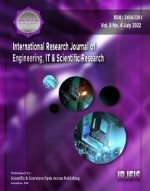Digital transformation in branding building for Vietnam higher education industry
Keywords:
brand communication, branding, digital communication, digital transformation, university educational brandAbstract
Any industry or any field that wants to be well known they need a right branding and PR strategy. Especially in the era of IT boom and globalization today, branding and communication are becoming more important than ever. It is considered a vital issue that determines the survival of any business. Education is a specific area and brand advertising needs its own strategy. In the context of today’s powerful digital transformation, Vietnam’s universities are making specific plans to begin their own transformations. We assert that digital communication in school brand communication is an important aspect of the digital transformation process at universities. Federating the on-campus digital data is fundamental to planning and executing brand communication programs for universities. Digital transformation plays an important part in improving the quality and efficiency of universities’ operation and their brand communication, whose mission is to showcase their educational achievements, establish competitive advantages and maintain social reputation.
Downloads
References
Ailawadi, K. L., & Keller, K. L. (2004). Understanding retail branding: conceptual insights and research priorities. Journal of retailing, 80(4), 331-342. https://doi.org/10.1016/j.jretai.2004.10.008
Aln?aç?k, E., & Aln?aç?k, Ü. (2012). Identifying dimensions of attractiveness in employer branding: effects of age, gender, and current employment status. Procedia-Social and Behavioral Sciences, 58, 1336-1343. https://doi.org/10.1016/j.sbspro.2012.09.1117
Armstrong, J. J., & Lumsden, D. B. (2000). Impact of universities' promotional materials on college choice. Journal of Marketing for Higher Education, 9(2), 83-91.
Braun, E., Eshuis, J., & Klijn, E. H. (2014). The effectiveness of place brand communication. Cities, 41, 64-70. https://doi.org/10.1016/j.cities.2014.05.007
Broucker, B., De Wit, K., & Mampaey, J. (2021). Brand communication of higher education institutions: a call for multichannel communication analysis in higher education branding research. Higher Education Policy, 34(4), 928-948.
Chee, C. Y., & Xu, D. (2005). Secure digital communication using controlled projective synchronisation of chaos. Chaos, Solitons & Fractals, 23(3), 1063-1070. https://doi.org/10.1016/j.chaos.2004.06.017
Grewal, D., Herhausen, D., Ludwig, S., & Ordenes, F. V. (2022). The future of digital communication research: Considering dynamics and multimodality. Journal of Retailing, 98(2), 224-240. https://doi.org/10.1016/j.jretai.2021.01.007
Hinings, B., Gegenhuber, T., & Greenwood, R. (2018). Digital innovation and transformation: An institutional perspective. Information and Organization, 28(1), 52-61. https://doi.org/10.1016/j.infoandorg.2018.02.004
Kotler, P., & Keller, K. L. (2016). A framework for marketing management (p. 352).
Mampaey, J. (2018). Brand communication in flemish higher education: A comparison between types of institutions. In Competition in Higher Education Branding and Marketing (pp. 63-79). Palgrave Macmillan, Cham.
Rauschnabel, P. A., Krey, N., Babin, B. J., & Ivens, B. S. (2016). Brand management in higher education: the university brand personality scale. Journal of Business Research, 69(8), 3077-3086. https://doi.org/10.1016/j.jbusres.2016.01.023
Scharf, E. R., & Correia, R. B. (2015). Identification with a higher education institution through communication of the brand. In The Sustainable Global Marketplace (pp. 478-481). Springer, Cham.
Sousa, M. J., & Rocha, Á. (2019). Digital learning: Developing skills for digital transformation of organizations. Future Generation Computer Systems, 91, 327-334. https://doi.org/10.1016/j.future.2018.08.048
Thuy, V. T. N., & Thao, H. D. P. (2017). Impact of students’ experiences on brand image perception: the case of Vietnamese higher education. International Review on Public and Nonprofit Marketing, 14(2), 217-251.
Tien, N. H., Minh, H. T. T., & Dan, P. V. (2019). Branding building for Vietnam higher education industry-reality and solutions. International Journal of Research in Marketing Management and Sales, 1(2), 118-123.
Valitov, S. M. (2014). University brand as a modern way of winning competitive advantage. Procedia-Social and Behavioral Sciences, 152, 295-299. https://doi.org/10.1016/j.sbspro.2014.09.198
Vivas, F. E. V., Cuello, R. L. C., Macías, D. M., & Rosado, G. P. (2017). Elaboration of essential oil from the oregano for medicinal use sheet. International Journal of Physical Sciences and Engineering, 1(1), 81–87. https://doi.org/10.21744/ijpse.v1i1.22
Yuliara, I. M., Ratini, N. N., Windarjoto, W., & Suandayani, N. K. T. (2020). Spectral reflectance and principal component analysis on the distribution of clove vegetation using Landsat 8. International Journal of Physical Sciences and Engineering, 4(3), 27–37. https://doi.org/10.29332/ijpse.v4n3.611
Zehir, C., ?ahin, A., Kitapç?, H., & Öz?ahin, M. (2011). The effects of brand communication and service quality in building brand loyalty through brand trust; the empirical research on global brands. Procedia-Social and Behavioral Sciences, 24, 1218-1231. https://doi.org/10.1016/j.sbspro.2011.09.142
Published
How to Cite
Issue
Section
Copyright (c) 2022 International research journal of engineering, IT & scientific research

This work is licensed under a Creative Commons Attribution-NonCommercial-NoDerivatives 4.0 International License.
Articles published in the International Research Journal of Engineering, IT & Scientific research (IRJEIS) are available under Creative Commons Attribution Non-Commercial No Derivatives Licence (CC BY-NC-ND 4.0). Authors retain copyright in their work and grant IRJEIS right of first publication under CC BY-NC-ND 4.0. Users have the right to read, download, copy, distribute, print, search, or link to the full texts of articles in this journal, and to use them for any other lawful purpose.
Articles published in IRJEIS can be copied, communicated and shared in their published form for non-commercial purposes provided full attribution is given to the author and the journal. Authors are able to enter into separate, additional contractual arrangements for the non-exclusive distribution of the journal's published version of the work (e.g., post it to an institutional repository or publish it in a book), with an acknowledgment of its initial publication in this journal.
This copyright notice applies to articles published in IRJEIS volumes 6 onwards. Please read about the copyright notices for previous volumes under Journal History.















